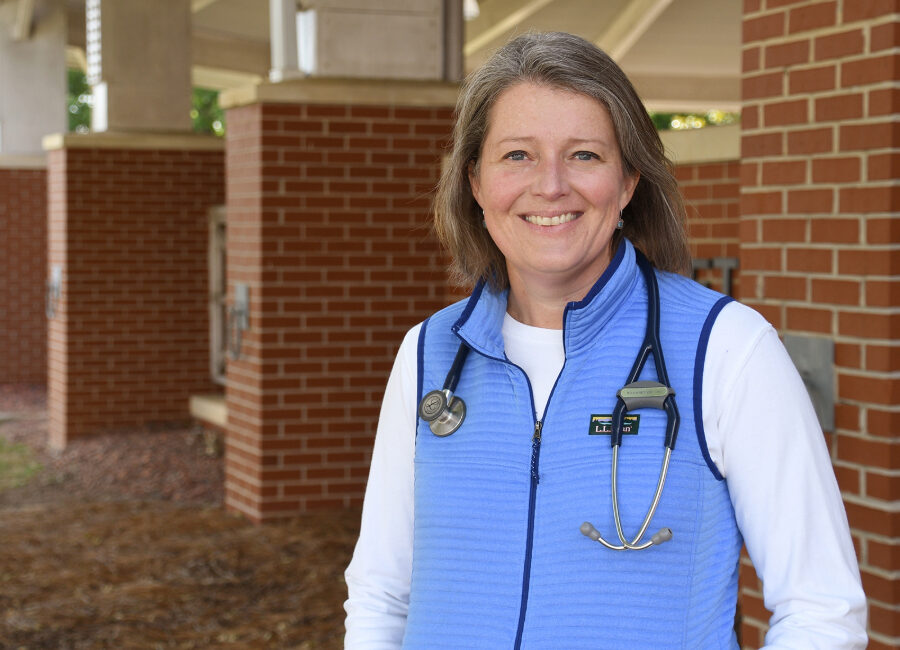Dust-busting is one of Erin Groover, DVM’s superpowers.
Equine asthma cases dominate her docket as a veterinarian in Auburn University’s College of Veterinary Medicine. Immediate treatment relies on medicine and maintaining a dust-free environment in the hospital – hence her expertise with reducing respirable particles, aka “dust.â€
Airlite dust-free bedding, soaked hay and air conditioning create an ideal environment for equine asthma patients at the hospital. Horses’ dramatic improvement in this environment – sometimes without medication – is convincing evidence of the stable environment’s impact on respiratory issues.
Once the disease is under control, Dr. Groover’s next priority is helping owners embrace the importance of low-dust environments when these patients go home.
“We show owners that the disease is best managed by managing their horse’s environment, rather than continuous use of medication,†Dr. Groover explains.
Ideally, horses live outdoors all or some of their day, in areas free of pollution and wildfire smoke. Indoor living, however, is a reality for many. For them, owners with Dr. Groover’s dust-busting focus and dedication put them in the best possible hands.
Conditions on the middle and severe end of the equine asthma spectrum are rarely curable. Management is key to keeping symptoms at bay and horses happy, comfortable and able to do their jobs.
Airlite In the Arsenal

Dr. Groover guesses Auburn University was among the first to jump on the Airlite bandwagon when the bedding became available nearly 10 years ago. Initially, they just used it for full-blown equine asthma cases. “Then we started using it for all horses with any kind of respiratory disease.â€
A patient recovering from an esophageal obstruction is a recent example cared for in an Airlite-bedded stall. The bedding is made of pre-consumer cardboard. Along with the benefit of having no contaminants, it’s unappetizing for horses. That’s a plus for patients on a restricted diet following choke episodes. “They don’t have to be muzzled and can eat and drink normally.â€
Airlite is also used in the stalls where Auburn’s Aime K Johnson, DVM, DACT, and team care for mares with high-risk pregnancies.
Educating Owners
Maintaining a dust-free or low-dust stable environment is a challenge, Dr. Groover acknowledges. Even when owners see the clear improvement in their horse’s respiratory health after an Auburn University stay, creating such a healthy situation at home takes diligence.
A 2020 study* published by the Journal of Equine Veterinary Science confirmed this challenge. “The overall compliance to the (environmental) protocol was poor and the horses’ clinical health and need for pharmacological management was related to the successful implementation of the environmental recommendations provided on disease diagnosis.â€
“The owners who’ve had their horse here, and seen the environmental management and its results, understand it better than the ones who haven’t,†Dr. Groover notes.
Maintaining a dust-free stable is easier for those who keep their horses at home and handle all aspects of stable management.
“We show owners that the disease is best managed by managing their horse’s environment, rather than continuous use of medication.”
Where Dust comes From
Bedding and hay are the two biggest sources of respirable dust in most horses’ stable. These often-invisible particles can include mold spores and other allergens. When these enter the horse’s airway and lungs, they cause irritation and trigger the body’s immune response in the form of inflammation and increased mucus.
This restricts the airways, making it harder to inhale oxygen and exhale carbon dioxide. Left untreated too long, this process can cause permanent remolding of the airways.
That’s why dust-free bedding like Airlite and steamed or soaked hay have such a big impact on managing – or better yet, preventing – respiratory disease. Dr. Groover and her team send recovered horses home with oodles of educational info and, often, samples of Airlite bedding and advice on where to buy it locally.
Ensuring airflow is equally important. Ideally, this is factored into stable design, with windows and doors positioned to capture prevailing breezes. Safely situated fans can help move dust particles out of horse’s breathing zone.
Air conditioning is awesome, Dr. Groover notes. “Heat and humidity are brutal for a horse that is struggling to breathe.†But it’s not practical for most horse owners.
One client was especially motivated by the improvement her horse experienced in Auburn University’s care. “She put plexiglass in the stall and an air conditioning unit in the window box,†Dr. Groover shares. “She saw the big difference the environment here made, and she did that for her horse.â€
Early Catch
Prevention is the ideal scenario with equine asthma and that rests on recognizing symptoms when respiratory problems are in their most treatable, reversible stages.
“A horse that begins to cough during exercise is the #1 thing people start to see,†Dr. Groover says. Tiring more easily or simply not performing as well as usual are other early, subtle indicators of possible respiratory problems. Eagle-eyed owners can help their horse a lot by calling their vet early.
“When asthma is already severe, you’re not going to miss the signs,†the veterinarian continues. “That’s when your horse is having respiratory distress even at rest. I would hope you would have called the veterinarian by then. But sometimes, people assume ‘It’s just asthma,’ so I’m not going to do anything about it.â€
Dr. Groover considers Airlite bedding important to Auburn University’s part in a larger veterinary world campaign to help horse owners understand and account for dust’s dangers.
*(Owner Compliance to an Environmental Management Protocol for Severe Equine Asthma Syndrome, Joana Simoes, Jose P Sales Luis, Paula Tilley)





